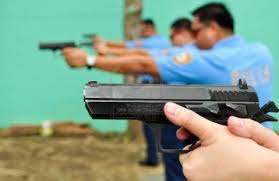Fatal police shootings in 2015 approaching 400 nationwide
Share
Explore Our Galleries
Breaking News!
Today's news and culture by Black and other reporters in the Black and mainstream media.
Ways to Support ABHM?
By Kimberly Kindy, the Washington Post
In an alley in Denver, police gunned down a 17-year-old girl joyriding in a stolen car. In the backwoods of North Carolina, police opened fire on a gun-wielding moonshiner. And in a high-rise apartment in Birmingham, Ala., police shot an elderly man after his son asked them to make sure he was okay. Douglas Harris, 77, answered the door with a gun.
The three are among at least 385 people shot and killed by police nationwide during the first five months of this year, more than two a day, according to a Washington Post analysis. That is more than twice the rate of fatal police shootings tallied by the federal government over the past decade, a count that officials concede is incomplete…
A national debate is raging about police use of deadly force, especially against minorities. To understand why and how often these shootings occur, The Washington Post is compiling a database of every fatal shooting by police in 2015, as well as of every officer killed by gunfire in the line of duty. The Post looked exclusively at shootings, not killings by other means, such as stun guns and deaths in police custody.
Using interviews, police reports, local news accounts and other sources, The Post tracked more than a dozen details about each killing through Friday, including the victim’s race, whether the person was armed and the circumstances that led to the fatal encounter. The result is an unprecedented examination of these shootings, many of which began as minor incidents and suddenly escalated into violence.
Among The Post’s findings:
●About half the victims were white, half minority. But the demographics shifted sharply among the unarmed victims, two-thirds of whom were black or Hispanic. Overall, blacks were killed at three times the rate of whites or other minorities when adjusting by the population of the census tracts where the shootings occurred.
●The vast majority of victims — more than 80 percent — were armed with potentially lethal objects, primarily guns, but also knives, machetes, revving vehicles and, in one case, a nail gun.
●Forty-nine people had no weapon, while the guns wielded by 13 others turned out to be toys. In all, 16 percent were either carrying a toy or were unarmed.
●The dead ranged in age from 16 to 83. Eight were children younger than 18, including Jessie Hernandez, 17, who was shot three times by Denver police officers as she and a carload of friends allegedly tried to run them down.
The Post analysis also sheds light on the situations that most commonly gave rise to fatal shootings. About half of the time, police were responding to people seeking help with domestic disturbances and other complex social situations: A homeless person behaving erratically. A boyfriend threatening violence. A son trying to kill himself.
Ninety-two victims — nearly a quarter of those killed — were identified by police or family members as mentally ill…
Although race was a dividing line, those who died by police gunfire often had much in common. Most were poor and had a history of run-ins with law enforcement over mostly small-time crimes, sometimes because they were emotionally troubled…
Police are authorized to use deadly force only when they fear for their lives or the lives of others. So far, just three of the 385 fatal shootings have resulted in an officer being charged with a crime — less than 1 percent…
According to The Post’s analysis, the daily death toll so far for 2015 is close to 2.6. At that pace, police will have shot and killed nearly 1,000 people by the end of the year.
Read the full article here.
Read more Breaking News here.










Comments Are Welcome
Note: We moderate submissions in order to create a space for meaningful dialogue, a space where museum visitors – adults and youth –– can exchange informed, thoughtful, and relevant comments that add value to our exhibits.
Racial slurs, personal attacks, obscenity, profanity, and SHOUTING do not meet the above standard. Such comments are posted in the exhibit Hateful Speech. Commercial promotions, impersonations, and incoherent comments likewise fail to meet our goals, so will not be posted. Submissions longer than 120 words will be shortened.
See our full Comments Policy here.